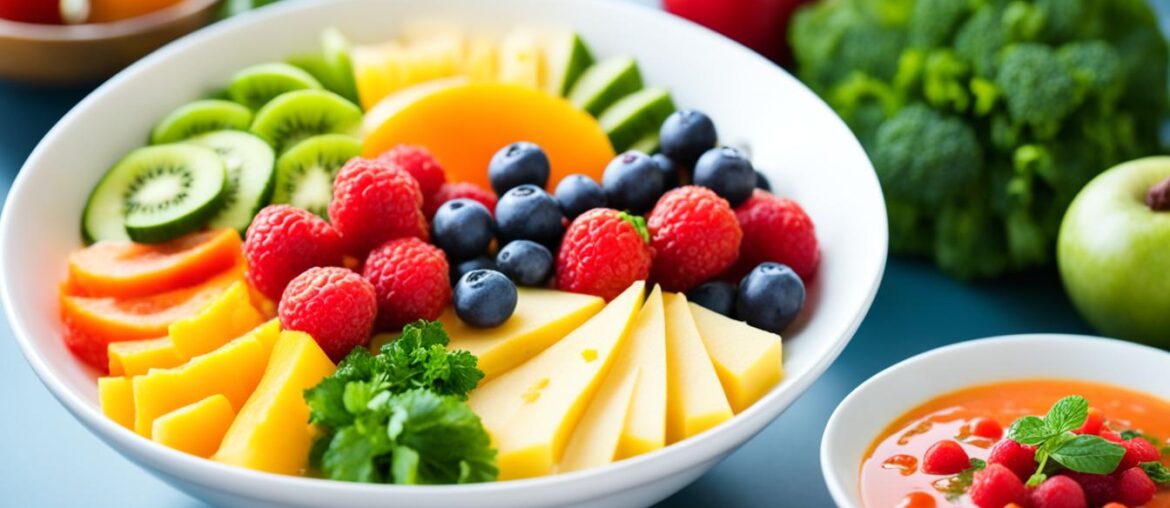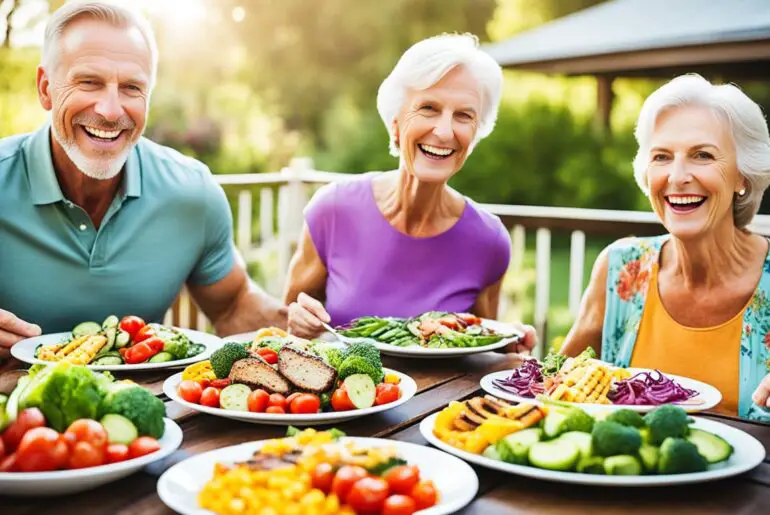Are you on the HCG diet and struggling to find low-fat cooking tips that satisfy your taste buds? Look no further! In this article, I will share essential strategies and techniques to help you create delicious and healthy meals while adhering to the low-fat requirements of the HCG diet.
- Choose low-fat cooking methods such as grilling, broiling, and boiling for HCG diet meals.
- Remove visible fats from meats and opt for lean options like chicken breast and white fish.
- Get creative with flavors using fresh herbs, vinegar, and HCG diet-approved seasonings.
- Plan your meals in advance and prep ingredients to stay on track with the HCG diet.
- Track your progress and make adjustments as needed to achieve your weight loss goals.
Phase 1 – The Start of the HCG Diet
The HCG diet consists of different phases that are essential for achieving successful weight loss. Phase 1, also known as the gorging or loading phase, plays a critical role in preparing the body for the low-calorie phase to come. During this phase, it is important to consume high-fat and oily foods while also starting to take HCG.
This phase is considered challenging and is crucial for the success of the diet. The purpose of gorging or loading is to help prevent extreme hunger pains during the first week of the diet. By consuming high-fat foods, the body gets accustomed to utilizing stored fat as a source of energy.
It is essential to eat until feeling sick during the gorging/loading phase. This may seem counterintuitive, but it is crucial to provide the body with enough stored fat to sustain it during the low-calorie phase. By overeating during this phase, you set the foundation for the upcoming fat-burning stage.
However, it is important to note that gorging/loading should only be practiced as prescribed within the HCG diet guidelines. It should not be extended beyond the recommended duration, as excessive gorging/loading may have adverse effects on your health.
Additionally, it is recommended to stop taking HCG for the last two days of this phase. This allows the HCG hormone levels in the body to decrease, which enhances its effectiveness during the subsequent phases of the diet.
Remember, phase 1 is just the beginning of your HCG diet journey. Stay committed and follow the guidelines carefully to set yourself up for success in the following phases.
“The gorging/loading phase of the HCG diet is crucial for preparing the body to enter the low-calorie phase. By consuming high-fat foods, we stimulate the body’s fat-burning processes and prevent extreme hunger pains.”
| Phase 1: The Start of the HCG Diet | Tips for Phase 1: |
|---|---|
| 1. Consume high-fat and oily foods to prepare the body for the low-calorie phase. |
|
| By properly following the guidelines for phase 1, you can set yourself up for success in the subsequent phases of the HCG diet. | |
Phase 2 – Fat Burn

Phase 2 of the HCG diet is the fat burn phase, where only 500 calories per day are consumed. This phase is crucial for achieving weight loss goals. During phase 2, the food choices are limited but carefully selected to support fat burning without compromising nutritional requirements. Here are some low-fat HCG diet meal options and the allowed foods for phase 2:
Lean Meats:
Lean meats such as beef, veal, chicken breast, and white fish are allowed during phase 2 of the HCG diet. It is important to remove all visible fat from the meat before cooking. Cooking methods should avoid the use of additional fat or oils.
Fruits and Vegetables:
Fruits and vegetables play a crucial role in providing essential vitamins and minerals during phase 2 of the HCG diet. However, portion sizes need to be carefully measured and adhered to.
Starches:
Starches should be limited during phase 2 of the HCG diet. Certain crackers or substitutions may be allowed in specific quantities. It is important to choose starch options that comply with the dietary restrictions.
Seasonings:
Seasonings used during phase 2 of the HCG diet should be chosen carefully to avoid any form of sugar or oil. It is important to select seasonings that enhance the taste of the meals without compromising the low-fat guidelines.
By following these guidelines and making conscious choices, it is possible to create delicious and satisfying meals that contribute to fat burning while adhering to the HCG diet protocol.
HCG Diet Recipe Ideas
While following the HCG diet, you may feel limited in your food choices. However, there are still plenty of delicious and satisfying recipe ideas that you can enjoy. Here are some low-fat HCG diet recipe ideas to inspire your meals:
Breakfast
Start your day with a nutritious and low-fat HCG diet breakfast. Try making an egg salad using only egg whites and a variety of vegetables. You can use ingredients such as diced tomatoes, sliced cucumbers, and chopped spinach. Season with salt, pepper, and a squeeze of fresh lemon juice for added flavor. This egg salad is packed with protein and nutrients, giving you the energy you need to kickstart your day.
Lunch and Dinner
For lunch and dinner, you can get creative with lettuce wraps. Use lean meats such as grilled chicken breast, turkey, or shrimp as your protein source. Fill the lettuce leaves with these lean meats and add a variety of vegetables like shredded carrots, sliced bell peppers, and diced onions. You can also experiment with different seasonings and sauces to enhance the flavors. Just make sure to choose seasonings and sauces that are compliant with the HCG diet guidelines.
Remember to always incorporate low-fat cooking techniques, such as grilling or broiling, for the lean meats to maintain the integrity of the HCG diet.
These lettuce wraps are refreshing, low in calories, and packed with essential nutrients. They provide a satisfying crunch and are a great option for a light yet flavorful low-fat HCG diet meal.
Incorporating these recipe ideas into your HCG diet meal plan can help you stay on track while enjoying a variety of flavors. Remember to choose lean proteins, load up on non-starchy vegetables, and get creative with your seasonings and sauces. The key is to find ways to make your meals delicious and satisfying without compromising the low-fat guidelines of the HCG diet.
Now, let’s take a look at a table that summarizes these HCG diet recipe ideas:
| Recipe Ideas | Ingredients | Cooking Method |
|---|---|---|
| Egg Salad | Egg whites, tomatoes, cucumbers, spinach, salt, pepper, lemon juice | Boil the eggs, separate the whites, and mix with the vegetables and seasonings |
| Lettuce Wraps | Lettuce, lean meats (chicken breast, turkey, shrimp), shredded carrots, bell peppers, onions, seasonings, compliant sauces | Grill or broil the lean meats, assemble the lettuce wraps with the vegetables, and season to taste |
These recipe ideas offer a variety of flavors and textures while adhering to the low-fat guidelines of the HCG diet. Get creative with your ingredients and seasonings, and enjoy tasty meals that support your weight loss journey.
What to Avoid While Taking HCG
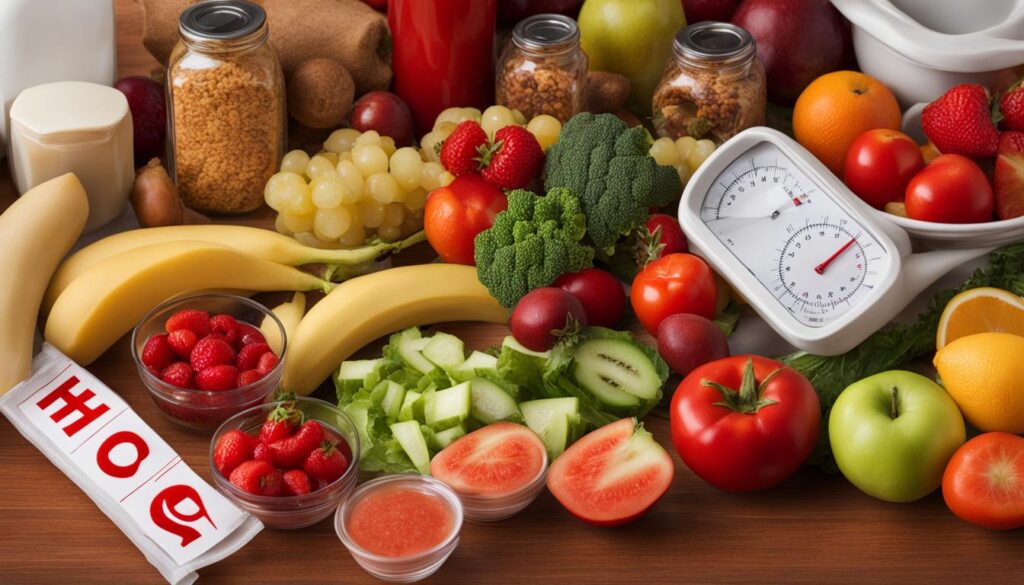
While on the HCG diet, it is crucial to be aware of certain restrictions to ensure optimal results. Here are some key factors to consider:
HCG Diet Restrictions:
1. Oil Limitations:
- Avoid using any form of oil in toiletries, such as shampoos, lotions, toothpaste, and makeup.
- Mineral oil is acceptable in moderation.
2. Toiletries to Avoid:
- Choose mineral-based cosmetics instead of liquid makeup to avoid oil-based products.
- Be cautious of any toiletries that contain oils or fats, as they can interfere with the HCG diet.
3. Massage and Sunbathing:
- Avoid getting massages or engaging in sunbathing during the diet, as they can hinder the effectiveness of the HCG protocol.
4. Moderate Exercise:
- Engage in moderate exercise to support overall health and well-being during the diet.
- If weight loss results are not as desired, it is advisable to pause or reduce exercise intensity until adjustments can be made.
By adhering to these guidelines, you can optimize the benefits of the HCG diet and achieve your weight loss goals.
Plateau Breakers
During the HCG diet, it’s not uncommon to experience plateaus where weight loss stalls despite following the protocol diligently. These plateaus can be frustrating and demotivating, but there are strategies you can implement to break through and continue your weight loss journey. In this section, I will share some effective plateau breakers that can help you overcome these challenges and get back on track.
Increasing Water Intake
One of the first steps in breaking through a weight loss plateau on the HCG diet is to increase your water intake. Staying hydrated is important for overall health and can help optimize your body’s metabolic processes. Aim to drink at least 8-10 glasses of water per day to ensure proper hydration. Not only can this support your weight loss efforts, but it also promotes good digestion and helps flush out toxins from your body.
Adjusting Protein Consumption
The amount of protein you consume on the HCG diet can also impact your weight loss progress. If you’ve hit a plateau, consider adjusting your protein intake. It’s possible that you may be consuming too much or too little protein for your body’s needs. Experiment with slightly increasing or decreasing your protein portions to find the right balance that works for you. Keep in mind that protein is essential for muscle maintenance and repair, so it’s important not to drastically reduce your intake.
Apple Day
An effective method to break through a weight loss plateau is to have an “Apple Day.” On this day, you would eat only apples and drink plenty of water. The idea behind this approach is that the low-calorie content and high fiber in apples can help stimulate your metabolism and kickstart weight loss. It’s important to note that Apple Days should only be done occasionally and not as a regular practice.
Reducing Beef Intake
If you’re consuming a lot of beef during the HCG diet and experiencing a plateau, reducing your beef intake might help. Beef can be high in fat and calories, which can slow down your weight loss progress. Consider substituting beef with leaner protein sources like chicken breast or white fish. This change in protein can provide a boost to your metabolism and help break through the plateau.
Checking Condiments and Hidden Additives
Condiments and hidden additives can often contain hidden sugars and additives that can hinder weight loss progress. Carefully check the labels of condiments and seasonings to ensure they are compliant with the HCG diet and don’t contain any unwanted ingredients. Opt for natural and sugar-free alternatives to enhance the flavor of your meals without compromising your progress.
Evaluating Ideal Weight and Lifestyle Factors
When facing a weight loss plateau, it’s important to evaluate your ideal weight and consider any lifestyle factors that may be affecting your progress. Sometimes, the body reaches a natural set point weight where further weight loss becomes challenging. In such cases, it may be necessary to reassess your weight loss goals and adjust them accordingly. Additionally, factors like changes in medication or increased physical activity can impact your weight loss journey. Take stock of any lifestyle changes that may be affecting your progress and make adjustments as needed.
Breaking through a weight loss plateau on the HCG diet can be challenging, but with the right strategies and mindset, it is achievable. By implementing these plateau breakers and staying committed to your goals, you can overcome plateaus and continue moving towards your desired weight. Remember to consult with your healthcare provider or a qualified HCG diet professional for personalized advice and guidance throughout your journey.
Phase 3 – Maintenance Phase
After completing the HCG injections, you enter Phase 3 of the HCG diet, which is the maintenance phase. This phase lasts for three weeks and plays a crucial role in ensuring long-term success. During Phase 3, you have more freedom in your food choices, but it is important to follow the post-diet guidelines to prevent weight gain and maintain your progress.
Eating Guidelines:
- You can eat anything except sugar and starch.
- Mindful carbohydrate intake is essential, as combining carbohydrates with fats can lead to weight gain.
- Weigh yourself daily to stay accountable and make adjustments if needed.
Caloric Intake:
- For females, the recommended caloric intake is between 800-1200 calories, depending on your lifestyle.
- For males, the recommended caloric intake is between 1200-1500 calories, again depending on your lifestyle.
Exercise:
Exercise can be reintroduced during Phase 3. Regular physical activity can help maintain your weight loss and improve overall health. Remember to listen to your body and find a workout routine that suits your preferences and abilities.
Phase 3 is an opportunity to transition from the HCG diet to long-term healthy habits. By following the maintenance guidelines and making mindful choices, you can sustain your weight loss and continue towards your health and wellness goals.
“This phase provides a bridge between the strict guidelines of the HCG diet and a long-term healthy lifestyle. It is crucial to stay focused and committed to maintaining your progress.”
Low-Fat Cooking Techniques for the HCG Diet
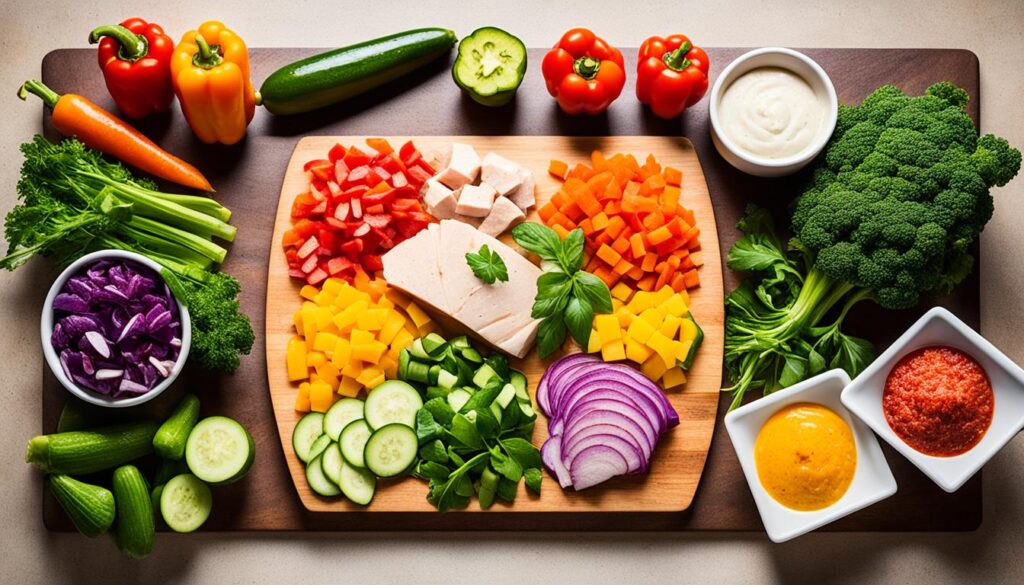
When following the HCG diet, cooking low-fat meals is essential for success. Implementing the right cooking techniques can make this process easier and more enjoyable. Here are some strategies to help you create delicious, low-fat meals that align with the HCG diet guidelines:
1. Grilling and Broiling
Grilling and broiling are excellent cooking methods for the HCG diet. These techniques allow you to cook lean meats, such as chicken breast or fish, without the need for additional fat or oil. The high heat helps to seal in the flavors, resulting in juicy and flavorful dishes. Remember to remove any visible fat from the meat before grilling or broiling.
2. Boiling
Another low-fat cooking technique for the HCG diet is boiling. Boiling is a simple yet effective way to cook vegetables and even proteins like shrimp or white fish. By using this method, you can create healthy and flavorful dishes without adding any extra fat. Boiling vegetables helps retain their nutrients, making them a nutritious addition to your meals.
3. Removing Visible Fat
When preparing meats for the HCG diet, it’s crucial to remove any visible fat. Trimming excess fat from meats helps reduce the overall fat content of your meals. This step ensures that you’re sticking to the low-fat requirements of the diet and optimizing your weight loss journey.
4. Accurate Measurements with a Food Scale
Using a food scale is essential for portion control and accurate measurements while cooking on the HCG diet. This tool allows you to measure your ingredients precisely, ensuring that you’re not exceeding the recommended serving sizes or adding unnecessary fats. An accurate food scale can help you stay on track with your low-fat cooking goals.
5. Flavorful Seasonings and Fresh Herbs
Although you need to avoid adding sugar or oil-based seasonings while on the HCG diet, you can still enhance the flavor of your meals with alternatives. Fresh herbs like basil, cilantro, and parsley can add brightness and depth to dishes without adding fats or calories. Additionally, vinegar, lemon juice, and spices can provide a delicious flavor boost without compromising your low-fat cooking goals.
By implementing these low-fat cooking techniques and incorporating flavorful seasonings, you can create satisfying and compliant meals on the HCG diet. Experiment with different ingredients and cooking methods to discover new flavors and expand your repertoire of HCG diet recipes.
Meal Prep Tips for the HCG Diet
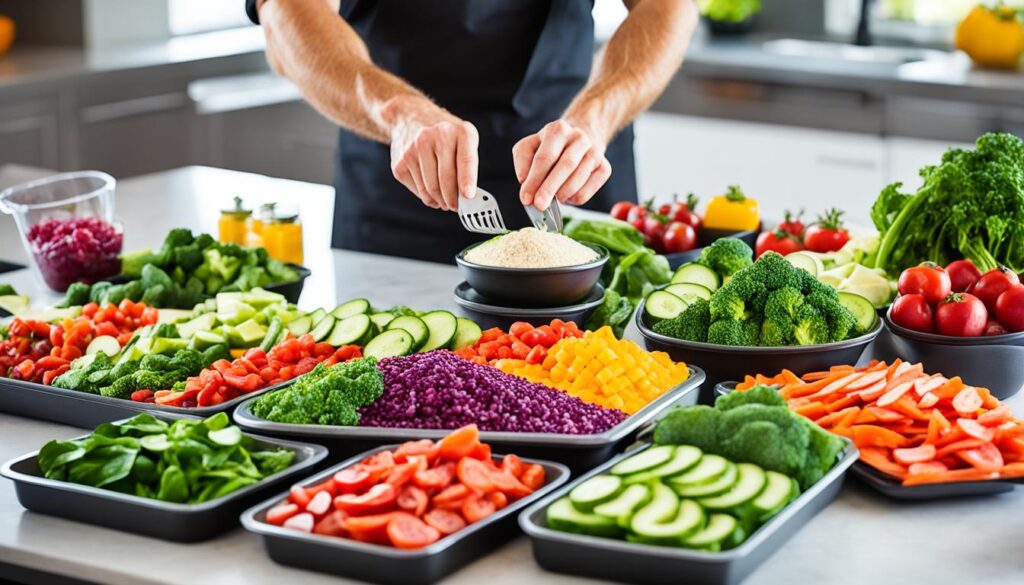
When following the HCG diet, meal prepping is a key strategy to ensure compliance and convenience. By planning meals in advance and preparing ingredients ahead of time, you can save valuable time and make it easier to stick to the diet. Here are some helpful tips for meal prepping on the HCG diet:
1. Choose lean meats: Opt for lean protein sources such as chicken breast or white fish. These types of meats are low in fat and provide essential nutrients while aligning with the low-fat requirements of the HCG diet.
2. Chop vegetables: Prepare your vegetables in advance by washing, peeling, and chopping them. This way, you’ll have ready-to-use ingredients for salads, wraps, or stir-fries.
3. Portion fruits, starches, and seasonings: Measure out your fruits, starches (such as crackers or approved substitutes), and seasonings in advance. This will help you accurately track your portion sizes and streamline your meal prep process.
4. Use a food scale: Invest in a reliable food scale to ensure accurate measurements of your ingredients. This will help you stay on track with the specific portion sizes required for the HCG diet.
5. Pre-portion meals: Consider pre-portioning your meals to help with portion control and convenience. Use containers or meal prep containers to store individual servings of your meals, making it easy to grab and go when you’re busy or on the move.
6. Plan your meals: Take the time to plan your meals for the week ahead. This will help you stay organized and avoid any last-minute temptations or deviations from the diet. Use a meal planner or a simple note-taking app to jot down your meal ideas and create a shopping list.
7. Batch cook: Save time by batch cooking certain components of your meals. For example, you can grill or bake multiple chicken breasts at once and store them for later use. This way, you’ll always have a protein option ready to incorporate into your meals.
8. Get creative with seasonings: While the HCG diet has specific restrictions on certain seasonings, there are still plenty of options to add flavor to your meals. Experiment with fresh herbs, vinegar, and approved seasonings to enhance the taste of your low-fat HCG diet meals.
By following these meal prep tips, you can stay consistent with the HCG diet and make it easier to stick to the low-fat guidelines. Meal prepping sets you up for success by ensuring that you have compliant meals ready to go, even on busy days.
Example Meal Prep Schedule:
| Day | Meal Prep Tasks |
|---|---|
| Sunday | Grill chicken breast and portion into individual servings. |
| Monday | Chop and wash vegetables for salads and wraps. |
| Tuesday | Measure out fruits, starches, and seasonings for the week. |
| Wednesday | Plan meals for the upcoming week and create a shopping list. |
| Thursday | Batch cook a larger portion of a specific protein source. |
| Friday | Pre-portion meals into containers for added convenience. |
| Saturday | Experiment with new seasonings and flavors for upcoming meals. |
Meal prepping can make all the difference in your success on the HCG diet. With a little planning and preparation, you can set yourself up for a week of healthy, low-fat meals that align with the requirements of the HCG diet.
Tracking Progress on the HCG Diet
![]()
Tracking progress is essential when embarking on the HCG diet journey. By monitoring and recording your measurements, weight changes, and observations, you can evaluate the effectiveness of the diet and make any necessary adjustments. One effective way to track progress is by using measurement charts.
Using Measurement Charts
Measurement charts allow you to keep a record of your body measurements throughout the HCG diet. These charts typically include areas such as the bust, waist, hips, inner thighs, and biceps. By measuring these areas before starting the diet and regularly during your journey, you can track changes in your body shape and visually see the progress you’ve made.
Here is an example of a measurement chart you can use:
| Area | Starting Measurement (inches) | Current Measurement (inches) | Change (inches) |
|---|---|---|---|
| Bust | {Starting Measurement} | {Current Measurement} | {Change} |
| Waist | {Starting Measurement} | {Current Measurement} | {Change} |
| Hips | {Starting Measurement} | {Current Measurement} | {Change} |
| Inner Thighs | {Starting Measurement} | {Current Measurement} | {Change} |
| Biceps | {Starting Measurement} | {Current Measurement} | {Change} |
Make sure to keep the measurement chart updated with accurate and consistent measurements to get an accurate representation of your progress.
Tracking Daily Weight Changes
In addition to measuring your body, tracking your weight on a daily basis can also provide valuable insights into your progress on the HCG diet. By recording your daily weight, you can observe any patterns, monitor consistent weight loss, or identify any plateaus that may occur. Keep a daily log of your weight and any observations or adjustments you make during the diet.
Here is an example of a daily weight tracking chart:
| Date | Morning Weight (lbs) | Observations/ Adjustments |
|---|---|---|
| {Date} | {Morning Weight} | {Observations/ Adjustments} |
| {Date} | {Morning Weight} | {Observations/ Adjustments} |
| {Date} | {Morning Weight} | {Observations/ Adjustments} |
| {Date} | {Morning Weight} | {Observations/ Adjustments} |
Remember to weigh yourself at the same time each day, preferably in the morning, for accurate and consistent results.
By diligently tracking your progress using measurement charts and daily weight records, you can gain valuable insights into the effectiveness of the HCG diet and make any necessary adjustments to achieve your weight loss goals.
Conclusion
The HCG diet offers a unique approach to weight loss, and while it may present challenges, there are effective strategies for success. By implementing low-fat cooking techniques, incorporating permitted ingredients, and embracing meal prepping, you can create delicious and healthy meals while staying on track with the HCG diet. It’s important to track your progress consistently, making adjustments as needed to achieve your weight loss goals.
With dedication and creativity, the HCG diet can lead to positive and sustainable results. Remember to focus on low-fat HCG diet tips, ensuring that your cooking strategies align with the guidelines. By selecting lean meats, removing visible fat, and using flavor enhancers like vinegar and fresh herbs, you can enjoy satisfying meals that support your weight loss journey.
Healthy cooking on the HCG diet is possible. Prepare your meals in advance, portion your ingredients, and embrace the limited but flavorful options available to you. Stay motivated, track your progress, and make adjustments as necessary to reach your desired outcome. By following the HCG diet cooking strategies and staying committed to your goals, you can achieve success on this unique weight loss protocol.
FAQ
What is the HCG Diet?
The HCG Diet is a weight loss protocol that involves different phases, including a low-calorie phase where only 500 calories are consumed per day. It is important to focus on low-fat cooking techniques and incorporate ingredients that are allowed on the HCG diet.
What is Phase 1 of the HCG Diet?
Phase 1 of the HCG diet is known as the gorging or loading phase. During this phase, it is important to consume high-fat and oily foods while also starting to take HCG. This phase helps prevent extreme hunger pains during the first week of the diet.
What is Phase 2 of the HCG Diet?
Phase 2 of the HCG diet is the fat burn phase where only 500 calories per day are consumed. The food choices are limited but include lean meats like beef, veal, chicken breast, and white fish. It is important to remove all visible fat from the meat and cook it without additional fat or oils.
What are some recipe ideas for the HCG Diet?
While on the HCG diet, breakfast options include egg salads with egg whites and vegetables. For lunch and dinner, lettuce wraps with lean meats and various vegetables are a nutritious choice. Creative seasonings and sauces that are compliant with the HCG diet can enhance the flavors of these low-fat meals.
What should I avoid while taking HCG?
While on the HCG diet, it is important to avoid any form of oil in toiletries such as shampoos, lotions, toothpaste, and makeup. Mineral oil in moderation is acceptable. Mineral-based cosmetics should be used instead of liquid makeup. Massage and sunbathing should be avoided, and moderate exercise is recommended.
What can I do to break through a weight loss plateau on the HCG diet?
To break through a plateau, increasing water intake, adjusting protein consumption, eating only apples for a day, and reducing beef intake are recommended. Checking condiments for hidden sugars and additives is essential. Evaluating ideal weight and considering lifestyle factors can also help overcome plateaus.
What is Phase 3 of the HCG Diet?
Phase 3 of the HCG diet is the maintenance phase, lasting for three weeks after completing the HCG injections. During this phase, participants can eat anything except sugar and starch but must weigh themselves daily. Care must be taken with carbohydrates and caloric intake can be increased depending on lifestyle. Exercise can also be reintroduced during this phase.
What are some low-fat cooking techniques for the HCG Diet?
Grilling, broiling, and boiling are recommended cooking methods for the HCG diet. It is important to remove visible fat from meats and avoid using additional fat or oils. Adding flavor with fresh herbs, vinegar, and seasonings without sugar or oil can enhance the taste of low-fat HCG diet meals.
What are some meal prep tips for the HCG Diet?
Planning meals in advance and preparing ingredients can save time and make it easier to stick to the HCG diet. Preparing lean meats, like chicken breast or white fish, and chopping vegetables for salads or wraps can be helpful. Portioning fruits, starches, and seasonings in advance can also streamline meal prep for the HCG diet.
How can I track my progress on the HCG Diet?
Measurement charts can be used to record starting and ongoing measurements of bust, waist, hips, inner thighs, and biceps. A tracking chart can help monitor daily weight changes and note any observations or adjustments made during the diet. Consistency in weighing oneself and recording progress can provide valuable data for evaluating the effectiveness of the HCG diet.
What are some concluding thoughts on the HCG Diet?
The HCG diet can be challenging but with the right strategies, it is possible to create healthy and satisfying meals. By focusing on low-fat cooking techniques, incorporating allowed ingredients, and meal prepping, individuals can successfully follow the HCG diet while enjoying a variety of flavors. It is essential to track progress and make adjustments as needed to achieve weight loss goals.

